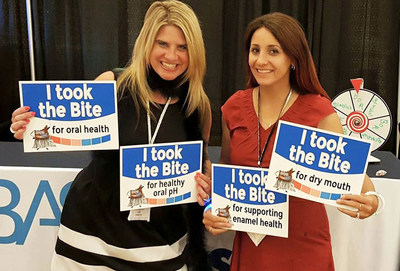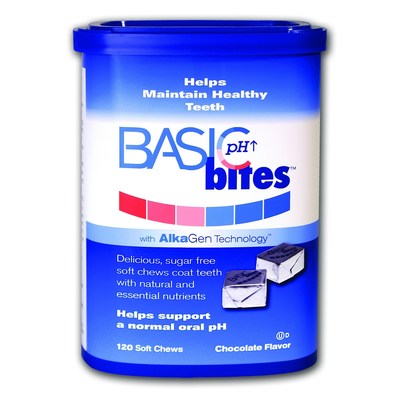Ever stop and look around during a doctor or hospital visit? Even a cursory look reveals dozens of medical instruments and hygienic tools made with plastics: protective examination gloves, sterile bandages and gauze, syringes that help prevent infection, IV tubes and bags that guard against contamination—all made possible by plastics.
Frankly, plastics so pervade the medical field that we often take them for granted. But recent advances could lead to even more innovations that could really get our attention … and help people all around the world. Here are some examples:Plastic Heart: Plastic tubes act like heart valves to let blood in and out of two plastic ventricles in an artificial heart that helps extend the lives of patients waiting for transplants. Implanted in more than 1,000 patients, the plastic heart has extended lives by more than 270 years, according to its manufacturer. Regulators now are reviewing an accompanying mobile power supply carried in a backpack, so suitable patients could leave the hospital and live at home.
Lifesaving Plastic Foam: A novel use of polyurethane foam is being explored to stabilize trauma patients with internal injuries on the battlefield. The U.S. government is studying the use of polyurethane foam to fill injured body cavities following severe internal injury from combat. The foam expands inside the body, conforming to the shape of injured tissue and reducing blood loss, before the surgeon removes the foam in one piece. Based on recent tests, researchers estimate that this technology could significantly boost post-injury survival rates.
Polycarbonate Medical Devices: An extremely tough, clear plastic, polycarbonate now is being used to make transparent surgical tools, such as cannulas (small tubes inserted into the body) that enable arthroscopic surgery. Since polycarbonate is clear, surgeons gain better visibility of sutures and surgical knots during the procedure.
Vaccination Patches: Researchers are developing a plastic skin patch that could replace many painful injections. The patch contains plastic “micro-needles” that dissolve into the skin, painlessly delivering vaccinations for a variety of diseases, including the flu. Patients might even be able to administer the vaccine themselves.
Resorbable Heart Stent: A plastic heart stent can open a clogged artery to restore blood flow to the heart—and then slowly dissolve into the body. This resorbable plastic could eliminate the need for another invasive procedure to remove the stent, as well as reduce the likelihood of blood clots and scarring.
3-D Body Part Printing: Researchers are using a layered assembly manufacturing technique—called “3-D printing”—to create medical devices and implants using plastics. For example, a type of polyester plastic (polycaprolactone) and living cells are combined into a material used to make 3-D printed implants to replace human ear cartilage. The combination of materials makes the body more likely to respond favourably to the implant, according to researchers.
Surgeons recently replaced 75 percent of a patient’s skull with an implant made from PEKK biomedical polymer, a medical plastic designed with a density and stiffness similar to bone. To create the implant, technicians used a 3-D printer to build layer upon layer of plastic based on a computer model of the patient’s skull—enabling a customized fit. Experts predict the same technology eventually could be used for a variety of implants throughout the body.
Bacteria-Resistant Plastics: Several newly discovered plastics might contribute to reduced infections. These plastics have “nonstick” surfaces that bacteria aren’t attracted to, which could help prevent contamination from bacteria-laden “biofilms.” The plastics could be used to make catheters or medical equipment to help ward off preventable disease.
Self-healing Prosthetics: Researchers are developing a new plastic “skin” that recognizes when it’s been damaged and responds by healing itself. The plastic skin mimics the flexibility and sensitivity of human skin—it becomes electrically conducive by adding a bit of nickel. The plastic skin can restore its mechanical and electrical properties after being cut … and repeat that cycle over and over again. Among other applications, researchers hope the self-healing plastic may be used to manufacture lifelike prosthetic limbs that heal themselves after injury—much the way human skin does.
Printing human ears … delivering painless vaccines … reducing blood loss on the battlefield … see-through medical devices. Plastics are helping drive innovations in medical care that were only dreams a few years ago.
Today's intelligent plastics are vital to the modern world. These materials enhance our lifestyles, our economy and the environment. For more information visit www.intelligentplastics.ca.
Les innovations dans les plastiques stimulent les soins médicaux passés, présents et futurs
Vous êtes-vous déjà arrêté pour regarder autour de vous lors d’une visite chez le médecin ou à l’hôpital? Même un rapide coup d’œil révèle des douzaines d’instruments médicaux et d’outils hygiéniques fabriqués avec des plastiques : des gants protecteurs d’examen, des bandes et des gazes stériles, des seringues qui aident à prévenir les infections, des tubes et des sacs IV qui protègent contre la contamination — tous rendus possibles par les plastiques.Franchement, les plastiques envahissent tellement le domaine médical que nous les tenons souvent pour acquis. Mais de récentes avancées pourraient mener à encore davantage d’innovations qui pourraient vraiment retenir notre attention... et aider les gens partout dans le monde. En voici quelques exemples :
Cœur en plastique : Les tubes en plastique agissent comme des valves cardiaques pour laisser le sang entrer et sortir des deux ventricules en plastique dans un cœur artificiel qui aide à prolonger la durée de vie des patients qui attendent une greffe. Implanté dans plus de 1 000 patients, le cœur en plastique a prolongé des vies pour plus de 270 ans, selon son fabricant. Des organismes de réglementation examinent maintenant un bloc d’alimentation mobile d’accompagnement transporté dans un sac à dos, de sorte que les patients appropriés pourraient quitter l’hôpital et vivre à la maison.
Mousse plastique qui sauve des vies : Une nouvelle utilisation de la mousse de polyuréthane est étudiée afin de stabiliser les victimes de trauma qui souffrent de blessures internes sur le champ de bataille. Les gouvernements étudient l’utilisation de la mousse de polyuréthane pour remplir les cavités des corps blessés à la suite d’une blessure interne grave lors d’un combat. La mousse se dilate à l’intérieur du corps, remplissant la forme du tissu blessé et réduisant la perte sanguine, avant que le chirurgien retire la mousse en un seul morceau. En se basant sur de récents tests, les chercheurs estiment que cette technologie pourrait hausser considérablement le taux de survie après une blessure.
Dispositifs médicaux en polycarbonate : Le polycarbonate, un plastique transparent extrêmement résistant, est maintenant utilisé pour fabriquer des outils chirurgicaux transparents, comme des canules (petits tubes insérés dans le corps) qui permettent une chirurgie arthroscopique. Puisque le polycarbonate est transparent, les chirurgiens obtiennent une meilleure visibilité des sutures et des nœuds de chirurgie pendant la procédure.
Timbres de vaccination : Les chercheurs mettent au point un timbre cutané en plastique qui pourrait remplacer de nombreuses injections douloureuses. Le timbre contient des « micro-aiguilles » en plastique qui se dissolvent dans la peau, libérant sans douleur des vaccins pour une variété de maladies, y compris la grippe. Les patients pourraient même pouvoir s’administrer le vaccin eux-mêmes.
Endoprothèse vasculaire résorbable : Une endoprothèse vasculaire en plastique peut ouvrir une artère obstruée pour rétablir le flux sanguin vers le cœur et ensuite se dissoudre lentement dans le corps. Ce plastique résorbable pourrait éliminer le besoin d’une autre procédure invasive pour retirer l’endoprothèse vasculaire, ainsi que pour réduire la probabilité de formation de caillots sanguins et la cicatrisation.
Impression 3D de parties du corps : Les chercheurs utilisent une technique de fabrication d’un ensemble avec couches - appelée « impression 3D » - pour créer des dispositifs médicaux et des implants à l’aide de plastiques. Par exemple, un type de plastique en polyester (polycaprolactone) et des cellules vivantes sont combinés en un matériau utilisé pour fabriquer des implants imprimés en 3D pour remplacer un cartilage d’oreille humaine. La combinaison des matériaux fait en sorte que le corps répondra plus favorablement à l’implant, selon des chercheurs.
Plastiques résistants aux bactéries : Plusieurs plastiques nouvellement découverts peuvent contribuer à réduire les infections. Ces plastiques possèdent des surfaces « non collantes » qui n’attirent pas les bactéries, qui pourraient aider à empêcher une contamination par des « biofilms » remplis de bactéries. Ces plastiques pourraient être utilisés pour fabriquer des cathéters ou de l’équipement médical pour aider à prévenir une maladie évitable.
Prothèses qui s’autoréparent : Les chercheurs mettent au point une nouvelle « peau » en plastique qui reconnaît le fait qu’elle est endommagée et qui répond en s’autoréparant. La peau en plastique imite la souplesse et la sensibilité de la peau humaine; elle devient électroconductrice par l’ajout d’un peu de nickel. La peau en plastique peut restituer ses propriétés mécaniques et électriques après avoir été coupée... et répéter ce cycle encore et encore. Parmi d’autres applications, les chercheurs espèrent que le plastique autoréparant pourra être utilisé pour fabriquer des prothèses réalistes qui s’autoréparent après une blessure, comme le fait la peau humaine.
Imprimer des oreilles humaines... distribuer des vaccins sans douleur... réduire la perte sanguine sur le champ de bataille... des dispositifs médicaux transparents. Les plastiques aident à stimuler des innovations dans les soins médicaux, lesquelles n’étaient encore que des rêves il y a quelques années à peine.
Les plastiques intelligents d’aujourd’hui sont essentiels au monde moderne. Ces matériaux améliorent nos modes de vie, notre économie et l’environnement. Pour plus de renseignements, visitez le site Web www.intelligentplastics.ca.
 Instant Mood Boost
Instant Mood Boost





